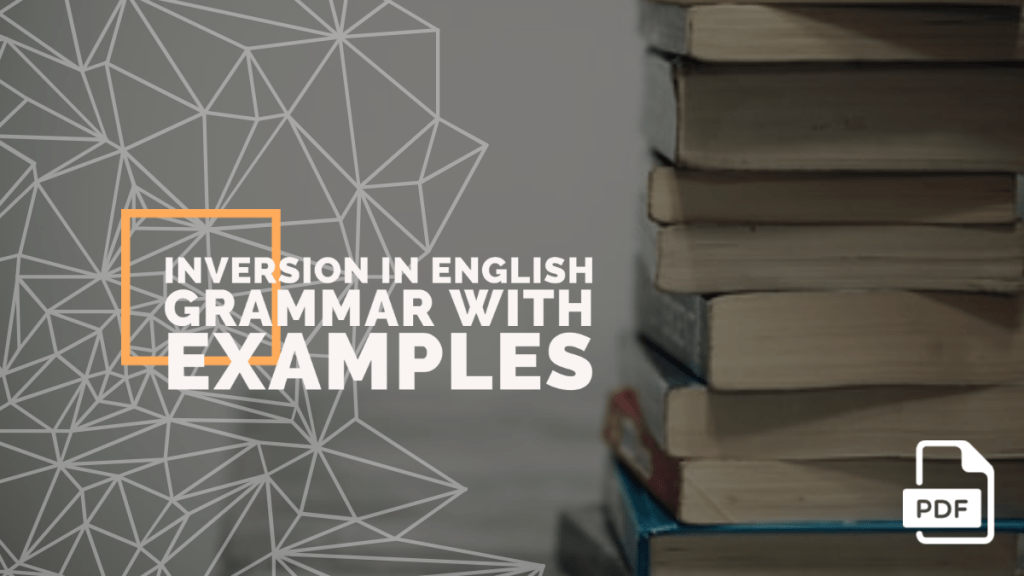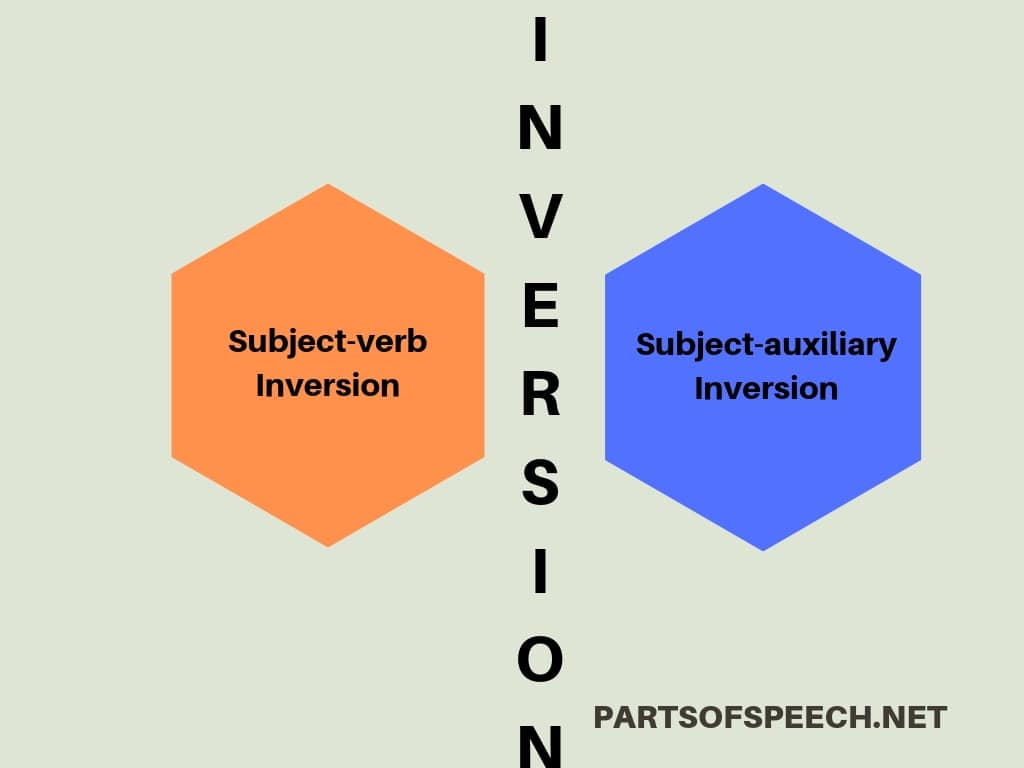Inversion in English Grammar with Examples [PDF]
In this new grammar lesson we are going to see What is an Inversion in English Grammar, types of Inversion, and also going to discuss when to use inversion with some suitable examples. To download the lesson in PDF format, please find the downloadable link attached below in the article.

What is an Inversion?
Inversion can be defined as the reversal of the normal word order – to be particular, it’s the placement of a subject after a verb. In other words, it’s simply a verb-subject switch.
Rhetorically referred to as hyperbaton, locative inversion, or stylistic inversion, Inversion is done in the same style that questions in the English language are formulated – where the subject and verb are interchanged before the question mark is added.
When to use an Inversion?
- When a Statement Features an Adverb Phrase at the beginning.
Commonly, inversion is used when the underlying statement happens to begin with an adverb phrase.
For example,
On the dance floor were the two free-spirited girls we all knew, Judy and Meg.
- When a Statement Begins with a Negative Adverb or is Modified by It.
Any sentence that begins with a negative adverb or happens to be modified by it will have to be inverted to make literal sense.
For example,
Never had she met someone so determined to win her over as the man she’ll agree to marry.
No sooner had they fallen asleep than the alarm started ringing.
- When ‘if’ is replaced by ‘were’, ‘had’, and ‘should’.
A sentence will be inverted with a conditional that omits the word ‘if’ to instead use ‘had’, ‘were,’ and ‘should’.
For example,
Had she started writing much earlier, she’d be done by now.
Should he propose, make sure he knows everyone was well aware of his plans.
- After the preposition ‘So is followed by an adjective and ‘that’.
An inversion is also likely to be used when the preposition so is followed by an adjective and ‘that’.
So psyched up were the dancers that the judges knew from the word go that they were the shoo-in winners.
- In Questions.
Needless to say, sentence inversion is what distinguishes questions from mere statements.
It can also be used in a statement to bring variety to your style of writing. But you have to be extra wary while at it to avoid sounding awkward or too formal.
Types of Inversion:
There’re basically two types of inversion those are:
- Subject-verb Inversion.
- Subject-auxiliary Inversion.

Let me discuss these in brief.
Subject-verb Inversion:
This is where the main subject and the main verb in sentences switch positions, turning the word order to verb -subject.
Example in a Sentence:
At the center of the house lay a big mat.
Here the verb lay has directly switched positions with the main subject, a big mat.
Subject-auxiliary Inversion
This is where the main subject and the auxiliary verb [External Links] switch positions, turning the word order to the auxiliary + subject.
Examples in a Sentence:
Hardly had I switched on my phone when it started ringing.
When does she arrive?
You haven’t eaten, have you?
The words in bold are auxiliaries, and as you can see, they’ve all switched positions with the main subject, thus making an auxiliary + subject inversion.
Complex Inversions:
Most learners aren’t much keen on noticing some types of inversions, more so the complex ones. So they’ll be quick to point them out as error of punctuation.
And that’s because after analyzing the sentence they’ll be quick to pass it as an interrogative sentence [External Link] because they’re used to a normal subject-verb word arrangement. Another reason could be that they encounter some hardship translating the sentence into their native language [External Link] –- and are, as such, forced to conclude the sentence is grammatically incorrect.
The point is, every time you come across a sentence where the verb or auxiliary has been interchanged with the main subject, then it’s grammatically wise to consider it as an inverted sentence [External Link] before you can decide to go ahead and weigh in on the grammatical aspect of it.
On the overall, inversions are meant to put some emphasis on the speaker’s main idea. It’s a literally technique that authors use to create some special effect or to stress on the message they’re trying to pass across.
It’s a literal technique that’s more on the formal side, so rarely are you likely to hear it in the day-to-day conversations people have.
More Examples on Sentence Inversion:
Example 1: With No Inversion.
- I have never encountered such a generous man.
Example 2: With Inversion.
- Never have I encountered such a generous man.
As you can see, the second sentence is inverted to stress on the fact that encountering a generous man is not an experience everyone can relate with. This is a one-of-a-kind situation that the author wishes to stress on, hence the use of inversion.
Recommended video on Inversion:
This is the complete explanation on Inversion in English Grammar if you still have any doubts feel free to comment down below.
References [External Link]:
- BBC Learning English – Course: Towards Advanced
- English Grammar – Inversion: “Had I known…”, “Should you